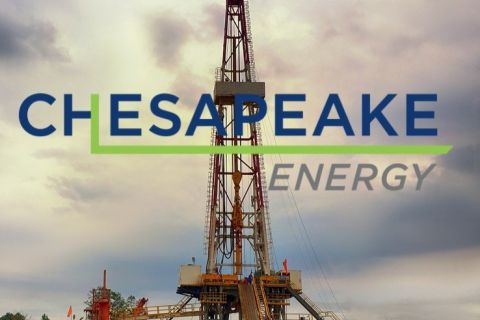Offshore pipeline repair can be an exceedingly expensive business. It’s not just the exorbitant capex of the repair equipment, which can run into tens of millions of dollars. Primarily, it’s the cost of downtime. If a pipeline is a single point of failure, it can cause total production shutdown.
Since 2011 IRM Systems has been studying the relationship between pipelines, the cost of downtime following a critical event, speed of repair and the overall benefit for the operator. Its objective is to help pipeline operators build more effective contingency systems—known as emergency pipeline repair systems (EPRS)—by bringing structure to the planning and preparation process.
“Any credible operator will have analyzed the threats to their pipelines and how they can be overcome, especially in deepwater,” said Derek Lee, engineering consultant at IRM Systems. “What’s missing is that operators often work in isolation, preventing lessons learned from filtering out across the industry. That’s what we’re trying to bring to this niche field, a ‘structured approach’ to EPRS design.”
EPRS is an evolving art and science. The scientific aspects relate to selecting methods and technologies that can be applied to repair pipelines, while the art is in choosing repair methods that make the most business sense, ensuring maximum coverage for the lowest investment. The reality is that some operators are reluctant to invest anything today to avoid problems tomorrow.
“On the face of it, that’s understandable, particularly in times of reduced oil revenues,” said Rutger Schouten, general manager of IRM Systems. “That said, there is no better time to secure the business case of particular fields. What happens if our assets are not producing? Assets aren’t getting any younger, and risks typically increase with age. Besides, there are ways to achieve an acceptable level of EPRS without big fat investments.”
Deepwater poses unique challenges
Due to prevailing conditions such as weather and shipping patterns, the EPRS challenge shifts from one region to another. There also is a strong correlation with water depth. Once the repair depth extends beyond the range of saturation divers, project complexity and cost increase significantly. At greater depths, the nature of threats facing pipelines and subsea infrastructure changes. On one hand, infrastructure is less susceptible to anchor drags and activity from shipping vessels. On the other—due to extremely challenging engineering requirements—deepwater field infrastructure can be more susceptible to inherent defects and defects arising from installation.
Case in point: the deepwater Girassol repair operation
The so-called “Girassol repair operation” offshore Angola illustrates the issues with which EPRS must contend. This was a 12-in. water injection line located at a depth of more than 1,350 m (4,429 ft). “The Girassol connector repair is regarded as one of the most challenging repairs ever undertaken. It took around three years to complete, from contracting to execution. Yes, it was a feat of engineering, but could it have been conducted faster and more cost-effectively? Definitely,” Lee said. “One of the overriding lessons that arises from it is that deepwater repairs require a completely different philosophy than conventional offshore operations; they demand some forward planning.”
For many, EPRS means having equipment on standby. But IRM Systems takes a wider view. “In most scenarios, equipment is an important consideration, but the reason is because of its long lead time,” Schouten said. “There are other long lead-time activities that could affect your critical path of repair--forming your repair team, putting out tenders for work, putting contracts into place or completing the engineering for the repair. The safest, best and most cost-effective repair is a well-prepared repair.”
Standby equipment
EPRS performance is assessed by the critical path and how different aspects of the operator’s organization influence the course of repair, according to Hesam Sanaee, project engineer for IRM Systems, who conducts EPRS performance analysis. “For shallow water and where pipelines meet landfall, there’s a benefit in having ‘soft’ components in place such as the engineering because it’s going to make a sizeable difference in downtime,” he said. “The thing is, it’s completely different for deepwater repairs, where it’s the hardware and tooling that’s going to make a difference of hundreds of days of downtime.”
Although bespoke forecasting models are produced for specific pipelines, the company recently developed a more generic downtime forecasting model. It highlights the relationships between the impact of unplanned repairs, forward planning and preparation. Conclusions and analysis from the model will be presented at conferences throughout 2015.
“The heart of the model is the empirical dataset,” Sanaee said. “Wherever available, we’ve used historical data on risks and lead times for critical equipment and essential activities such as isolation and decommissioning. Operators often have specific views on timelines, but when accurately forecasting downtime, there’s no substitute for experience, and not just for sourcing hardware.”
Every pipeline has a unique set of functional and technical requirements, making scalability within EPRS a high priority to prevent overspend. The larger the diameter of the line or the deeper it is, the less likely that off-the-shelf or proven repair technologies exist. Plus, there is the question of whether technologies are proven.
“Why would you want to introduce any more risk into a repair than absolutely necessary?” Schouten said. “Pipeline repair is already a risk-filled activity; you’ve got to close down uncertainty wherever possible. Reducing risk and costly downtime while minimizing the required investment--that’s the objective.”
The question of downtime is put into stark relief for deepwater lines. Sanaee updates the key input parameters in the model and, as lines become deeper, the number of repair method technologies available for their repair shrinks and the lead times expand. Soon the cost of lost and deferred production escalates to tens of millions of dollars.
“Is this a single point of failure? Is it critical for ongoing production? Perhaps not, but remember, a line needn’t be carrying hydrocarbons to be critical for production. Plus, a condensate export line may be just as critical to ongoing production as the gas export line—if one goes down then perhaps so does the other,” Sanaee said. “Understanding the context of the asset and where it sits in relationship to whatever else is happening in the system is a truly essential part of analyzing the risk.”
The Girassol line required bespoke engineering, a new spool piece to replace a buckled section of pipe and new lifting and alignment frames. It also was offshore Angola, and the repair contractor managed the repair from Aberdeen. “These are factors that could have a potential impact on the repair timelines. With deep and ultradeep fields served by FPSO [vessels] in increasingly inaccessible locations, the challenge won’t diminish,” Lee said.
No silver bullet
Unfortunately, there is no technological silver bullet to the problem. “It’s important to remember that we’re not pushing any one technology or method. That’s for suppliers to do,” Schouten said. “What we’re advocating is that operators adopt a structured approach to dealing with this issue because we are certain that it will make a positive difference. Put simply, this means quantifying the impact of a specific pipeline going down and then working out—step by step—what you are going to do from that point on until recommissioning. Ultimately, recommissioning the pipeline is what an EPRS is all about.”
Recommended Reading
Enbridge Advances Expansion of Permian’s Gray Oak Pipeline
2024-02-13 - In its fourth-quarter earnings call, Enbridge also said the Mainline pipeline system tolling agreement is awaiting regulatory approval from a Canadian regulatory agency.
Moda Midstream II Receives Financial Commitment for Next Round of Development
2024-03-20 - Kingwood, Texas-based Moda Midstream II announced on March 20 that it received an equity commitment from EnCap Flatrock Midstream.
Bobby Tudor on Capital Access and Oil, Gas Participation in the Energy Transition
2024-04-05 - Bobby Tudor, the founder and CEO of Artemis Energy Partners, says while public companies are generating cash, private equity firms in the upstream business are facing more difficulties raising new funds, in this Hart Energy Exclusive interview.
JMR Services, A-Plus P&A to Merge Companies
2024-03-05 - The combined organization will operate under JMR Services and aims to become the largest pure-play plug and abandonment company in the nation.
Chesapeake Slashing Drilling Activity, Output Amid Low NatGas Prices
2024-02-20 - With natural gas markets still oversupplied and commodity prices low, gas producer Chesapeake Energy plans to start cutting rigs and frac crews in March.





